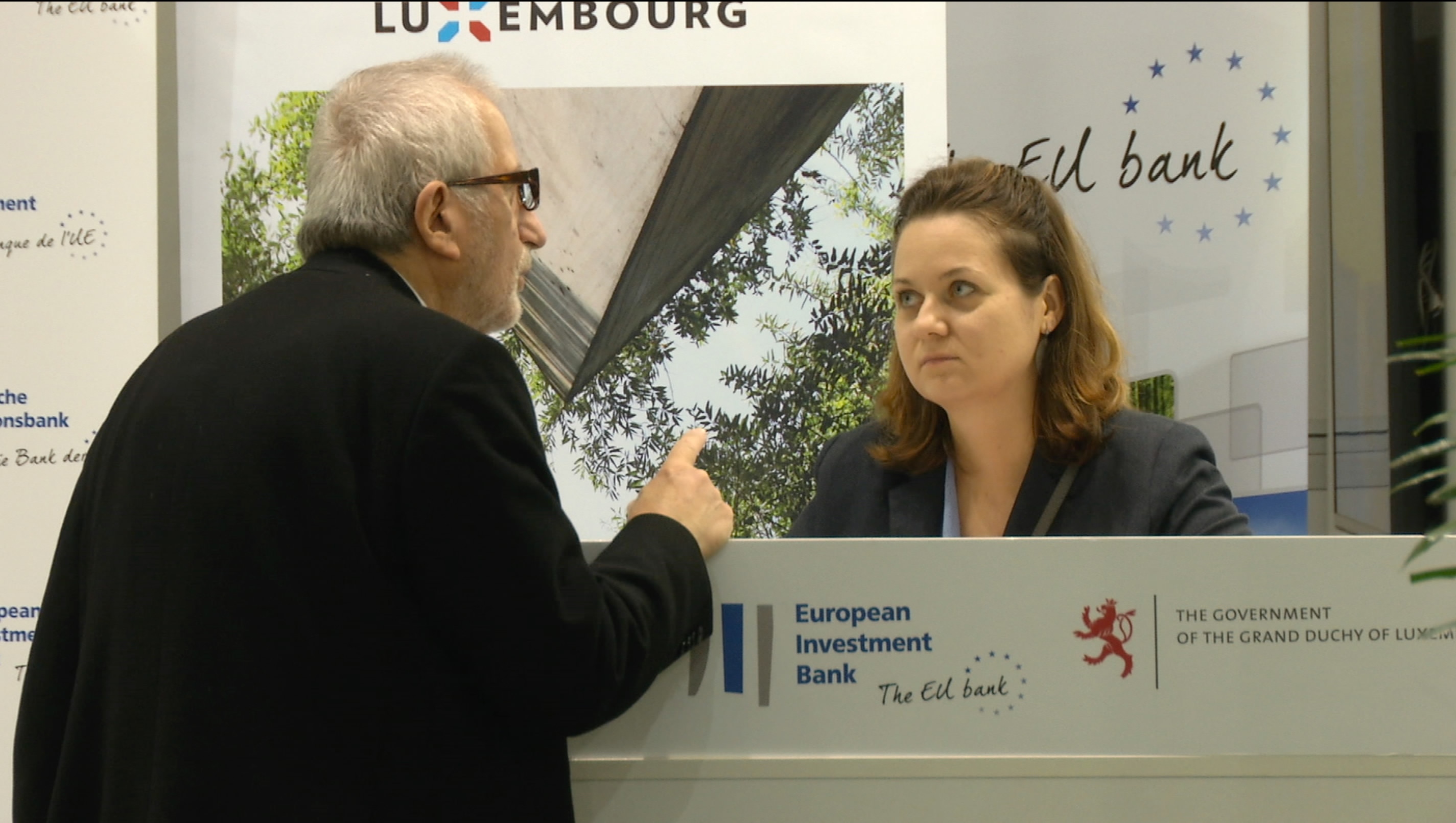
Business
11:50, 17-Nov-2017
COP 23 centers around financing climate change initiatives
By CGTN's Natalie Carney

Much of the discussion over the last two-weeks at the UN Conference on climate change, or COP, has centered around the implementation of the 2015 Paris Agreement that aims to limit the global rise in temperatures by two degrees before the end of the century.
The efforts to contain rising temperature will require monumental infrastructural changes, costing trillions of US dollars over the years to come.


Pavilion decorations at the 2017 United Nations Conference on Climate Change (COP23) in Bonn Germany. /CGTN Photo
Pavilion decorations at the 2017 United Nations Conference on Climate Change (COP23) in Bonn Germany. /CGTN Photo
According to Shamshad Akhtar, the Under-Secretary General for the United Nations Economic and Social Commission for Asia and the Pacific, "Developing Asia alone needs an estimated 3.6 billion dollars per annum up to 2030 to transition towards zero emissions and increase resilience as required by the Paris agreement.”
The good news is – more monetary commitments are being made, and more financial instruments available to fulfill those obligations.
Under the Green Climate Fund, established at COP15 in Copenhagen, developed countries will pay 100 billion US dollars annually from 2020 to help developing countries cope with the rising impact of global warming.


The Green Climate Fund at the Bonn Zone at COP23. /CGTN Photo
The Green Climate Fund at the Bonn Zone at COP23. /CGTN Photo
This week German Chancellor Angela Merkel announced that her country would double its financial promise to the fund.
Meanwhile, the European Investment bank, the world’s largest lender for green energy projects, announced that they would aim to increase their investments to 100 billion euros in the next five years.
One way of doing so is through "Green Bonds," which are becoming an increasingly popular source of funding for green energy projects.
According to Justine Leigh-Bell, the director of Market Development at the Climate Bonds Initiative, in the last three years, green bond issuance has jumped from three billion US dollars to 200 billion dollars, in large part because of China’s decision to take up the financial instrument as an asset class.
This was taken even further at the COP summit with the release of a white paper between the Green Finance Committee of the China Society for Finance and Banking and the European Investment Bank, providing an international comparison of several green bond standards.
Jonathan Taylor, the Vice President of the European Investment Bank, said this white paper allows for both the EU and China to turn Green bonds into a proper global project, which will attract further public and private sector investment in renewable energy.


A delegate at the European Investment Bank stand in the Bonn Zone at the 2017 United Nations Conference on Climate Change. /CGTN Photo
A delegate at the European Investment Bank stand in the Bonn Zone at the 2017 United Nations Conference on Climate Change. /CGTN Photo
David S. McCauley, Senior VP for Policy & Government Affairs, World Wildlife Fund (WWF) says more private sector investment is critical because the private sector provides much of the innovation behind new product development and is what’s making practical changes in the move towards zero carbon economies.
Many financial analysts want to see these funds more evenly allocated between projects that adapt to climate change and those that mitigate the effects of global warming.
They say this is what will get us closer to reaching the ambitious goals set out in the 2015 Paris agreement.
7833km

SITEMAP
Copyright © 2018 CGTN. Beijing ICP prepared NO.16065310-3
Copyright © 2018 CGTN. Beijing ICP prepared NO.16065310-3